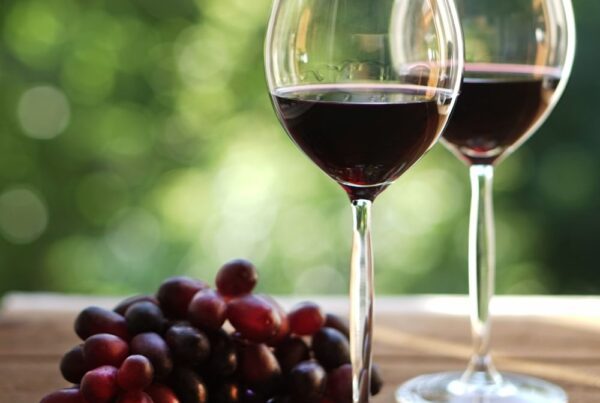If you like big, bold, aromatic wines with concentrated flavors, then you won’t be disappointed with Port wine.
But which one is right for you–Ruby or Tawny?
In this article, you will learn what Ruby and Tawny Ports are exactly, so that you can confidently choose the perfect Port for you.
Key takeaways:
- Ruby Port is ruby in color with berry, chocolate and cinnamon notes. Tawny Port is tawny to brown in color with dried fruit, walnut, chocolate, coffee and caramel notes.
- Tawny and Ruby Ports are made in the same way, but they are aged differently which results in different colors and flavors.
Before we dive further into the details of the differences between Ruby and Tawny Port, it is important to first understand what Port is and how it is made.
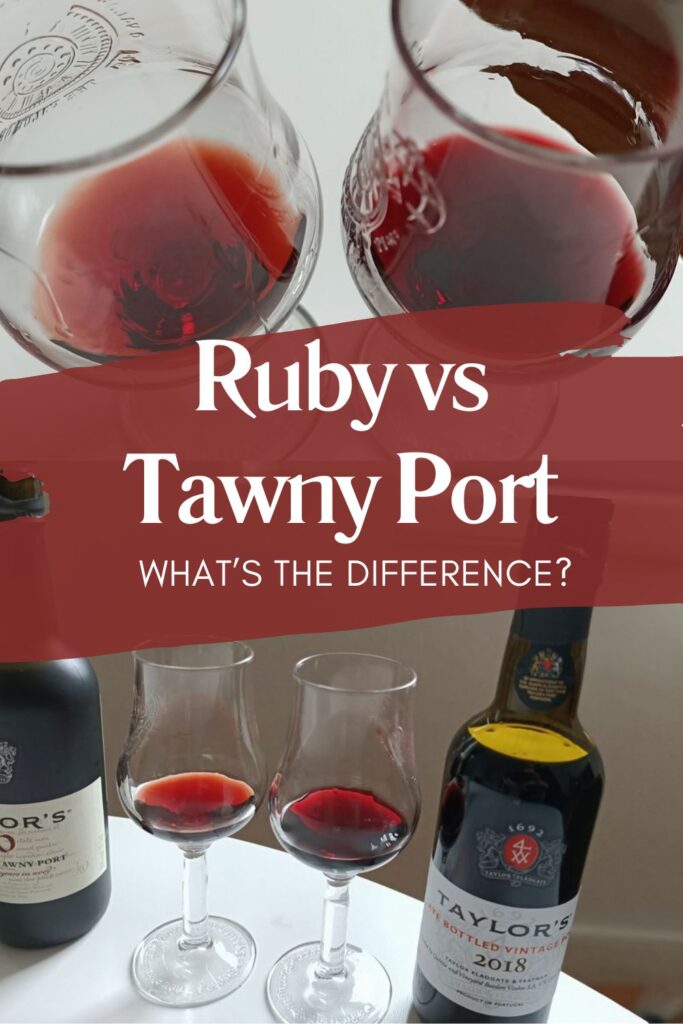
Contents
What is Port wine?
Port is a sweet, fortified wine from the Duoro region in Portugal.
It is made from a blend of black grapes varieties native to Portugal.
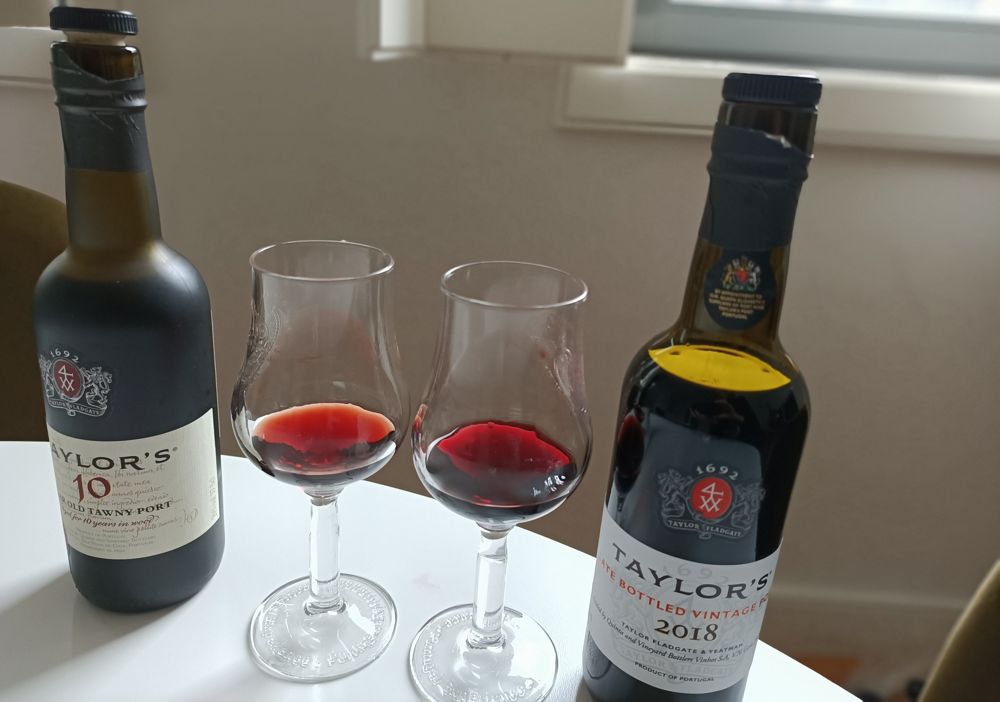
How Ruby and Tawny Port is made
Tawny and Ruby Ports are made in exactly the same way up until the ageing/maturation stage.
The grapes are handpicked and sorted. Then, they are crushed and fermented in a shallow granite trough, known as a lagar.
When approximately 50% of the natural sugars in the grapes are fermented into alcohol, the juice is drained into another container where it is fortified with grape spirit.
The grape spirit, also known as the “aguardante”, is colorless and odorless. The wine and grape spirit are mixed in a ratio of 4:1 (80% wine to 20% grape spirit). The result is a sweet fortified wine.
From here, the fortified wine is drawn into a large vat where it is left to settle over the winter.
The following spring, the wine is transported down river from the vineyards to Vila Nova de Gaia for maturation.
It is the differences in maturation that result in the differences in color and flavors of Ruby and Tawny Ports.
Note: Strong oak influences/flavors are not considered desirable in Port wine; therefore, all Port is aged in old oak rather than new oak. Old oak imparts fewer oak flavors (toast, vanilla etc) but the wine will still develop and mature in flavor.
How Ruby Port is aged
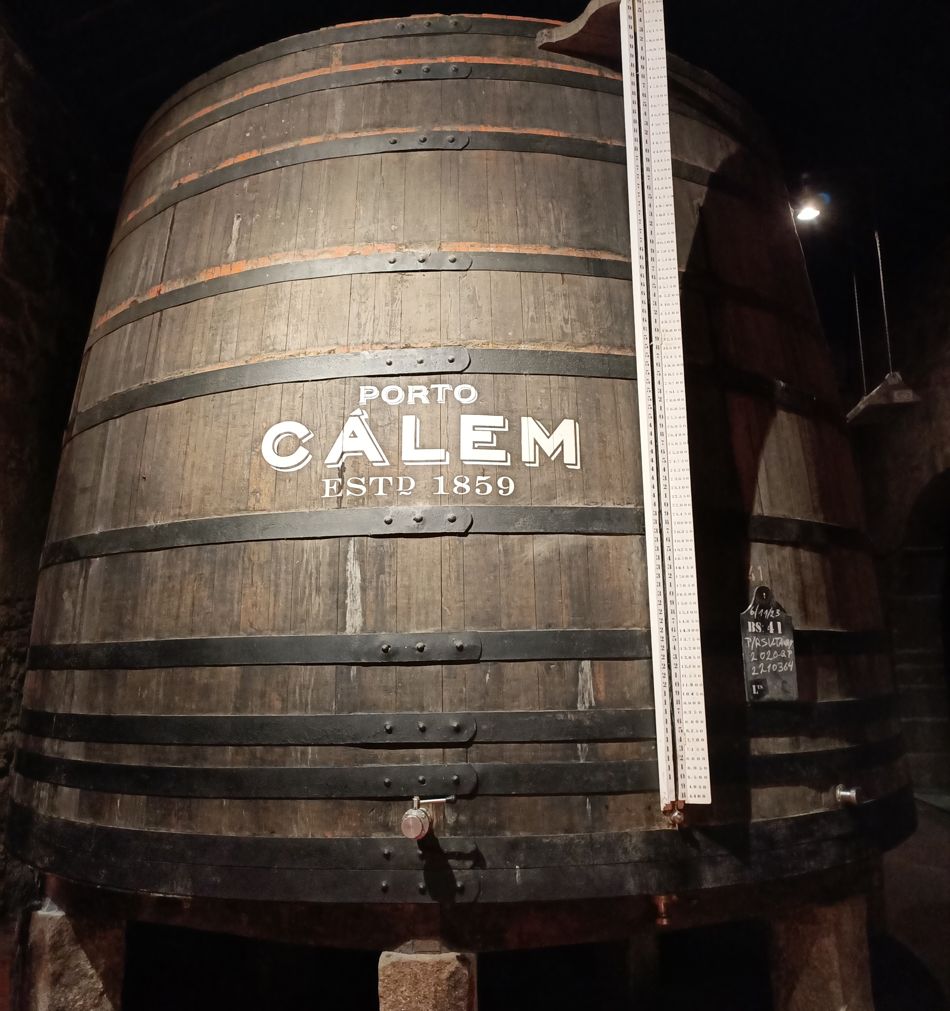
Ruby Ports are aged in large vats with minimal contact with wood and oxygen.
The wine is aged in the vats for different periods of time, depending on what type of Port the winemaker wants to create. You can see details on the ageing times for different Ruby Ports below.
Ruby Port characteristics and flavors
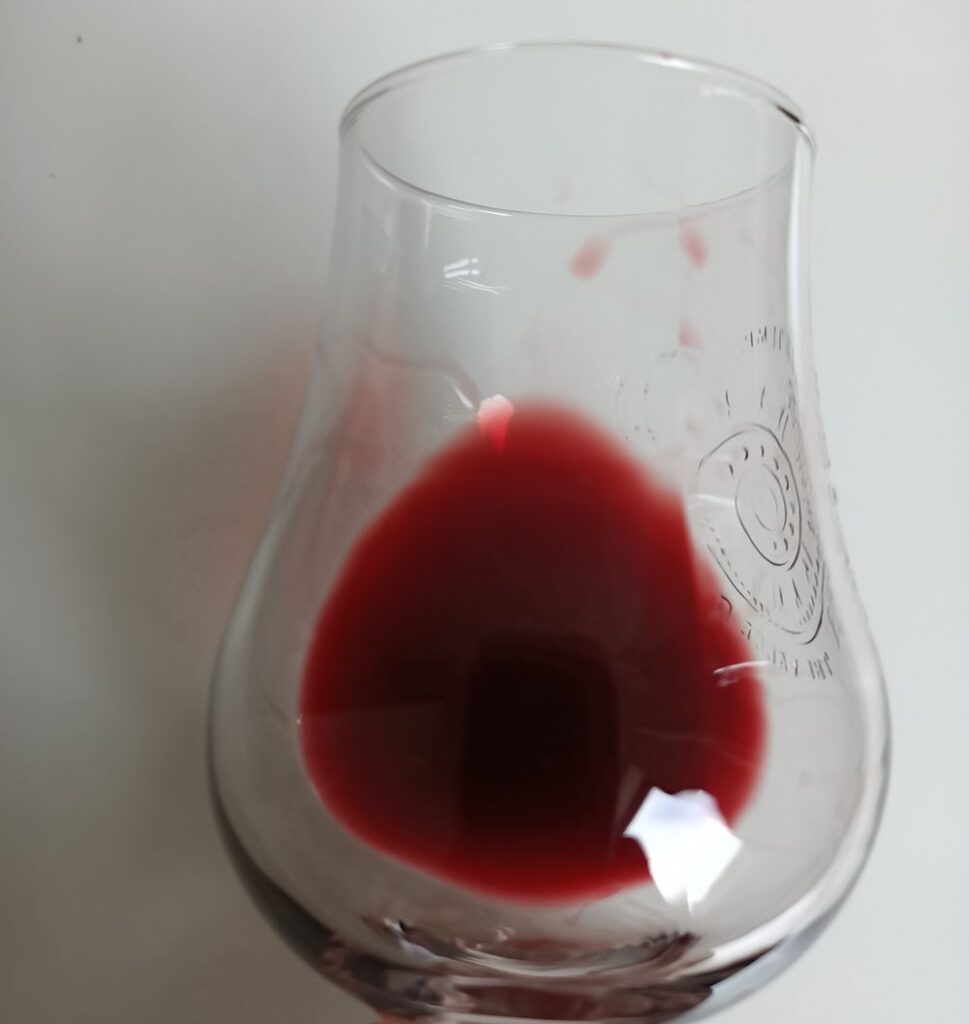
Ruby Port is a sweet, full-bodied and deeply colored wine. It is a vibrant ruby color.
The flavors of Ruby Port develop and change as it ages. Young Ruby Port has primary fruit flavors such as red and black berries, as well as chocolate and spices like cinnamon.
Wines that have aged for longer develop tertiary flavors, such as cooked fruit, prune and leather notes.
Ruby Port styles
Different styles of Ruby Port are matured for different periods of time:
Inexpensive Ruby Port
Inexpensive Ruby Ports are non-vintage, fruity, sweet, simple wines. They are full bodied with red fruit flavors and aromas.
They are aged for 2-3 years in vats before being bottled.
They are bottled ready to drink and do not benefit from further ageing.
Late Bottled Vintage (LBV) Ruby Port
LBV Port is made from a single year’s harvest. They have intense red and black fruit flavors, often with a hint of sweet spices.
Some are filtered and some are not. The unfiltered ports are usually labelled as such and will have a deposit that requires decanting.
They are aged for 4-6 years in vats and are ready to drink on release.
Reserve Ruby Port
Reserve Ruby Port is a premium-quality wine with a more rigorous criteria applied to grape selection than standard Ruby Port wine. They have more intense and complex flavors than inexpensive Ruby Ports.
Reserve Ruby Port is aged for 3-4 years in vats and they are ready to drink on release.
Vintage Port
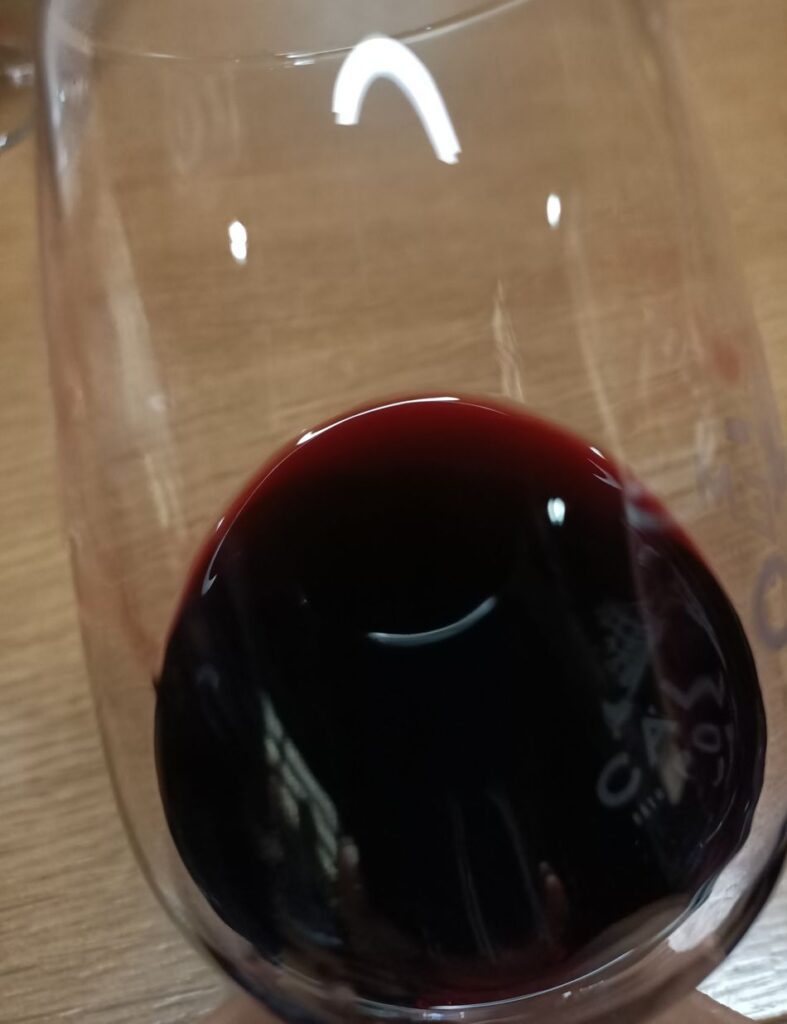
Vintage Port is made using grapes from the best vineyards and it is only made in exceptional years.
It is aged in oak for approximately 2 years.
Vintage Port is bottled unfiltered and therefore must be decanted, especially when it has been aged for long periods.
They are long-lived wines that benefit greatly from ageing. They can age for at least 30 years.
With ageing, intense red and black fruits with spicy notes evolve into cooked fruit with animal and vegetal notes over time.
For more information on Vintage Port, see our article all about Vintage Port.
Single Quinta Vintage Port
Single Quinta Port comes from an single vineyard or estate.
During years where a vintage is not declared, wine producers will release their best wines as Single Quinta Vintage Ports. They are high-quality wines, but they are not as prestigious as Vintage Port.
It is common for Single Quinta Port to be bottle aged prior to release, so they can often be bought ready to drink.
They are aged in vats for approximately 2 years before bottling.
The wine continues to mature and develop in the bottle for at least 20 years.
How Tawny Port is aged

Tawny Port is aged in small barrels, called “pipas” that are part-filled with wine. They pipas are approximately 5/6 full, ensuring the wine is in contact with oxygen.
It is this contact with the oxygen and wood that creates the oxidative notes in Tawny Port, as well as its color, which can range from Tawny (brownish) to brown color.
The longer a Tawny Port is aged, the darker and browner the color will be.
The smaller surface area of the pipas also ensures more contact with wood than in a large vat. This contact with the wood also influences and changes the flavors and color of the wine.
Tawny Port characteristics and flavors

Tawny Port is sweet, full-bodied and ranges from tawny (more brown than red) to brown (no redness) in color. The longer the wine is oxidatively aged, the browner the color will be. Only the oldest Tawny wines are completely brown in color.
As Tawny Ports age the fruit flavors fade and transform into dried fruit flavors, such as raisins and prunes. Tawny Ports also have notes of walnut, chocolate, coffee and caramel.
Tawny Port styles
There are different styles of Tawny Port that are made and aged in different ways:
Inexpensive Tawny Port
Inexpensive Tawny Ports are aged for 2-3 years in casks.
The tawny color is not due to a long period of oxidative ageing.
They are a paler-colored Ruby Port (some have White Port added to adjust the color) with caramel and toffee flavors.
Tawny With Indication Of Age
Tawny Ports with indication of age can be labelled 10, 20, 30 or 40 (indicates the average, rather than a minimum age).
These wines are made by blending wines from different harvests to achieve particular flavors, colors and aromas.
They are best served slightly chilled.
Colheita/Single Harvest Tawny
Colheitas is a Tawny wine made from a single harvest.
They mature in “pipas” for a minimum of seven years and can age sometimes for up to 100 years.
They develop kernel and oxidative flavors (walnut, coffee, caramel).
They have a tawny or even brown appearance rather than the ruby or purple colors of Vintage Ports.
They do not need to be decanted and should be drank as close to the bottling date as possible. This date is usually written on the label.

Read with confidence: I am a certified wine expert (WSET L3).



